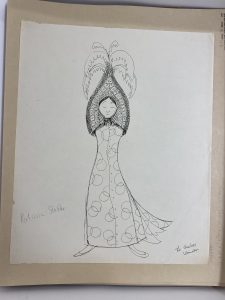
The Winthrop Group recently finished processing the papers of Jack and Irene Delano on behalf of the RBML. Here is a guest blog post written by Cristina Stubbe, the Winthrop archivist who processed the papers.
A Personal Connection with the Delano Collection
There is so much I could say about the Jack and Irene Delano papers, a collection that is an amazing snapshot of Puerto Rican history from the 1940s to the 1980s, and one that I foresee being widely used. I could write essays about the visual history found in Jack’s photography through the years, the community outreach of the DIVEDCO program, and the artistic knowledge in the many drafts of illustrated books.
For me, processing the collection was also personal. Both my parents were born and raised in Puerto Rico, and I still have a lot of family there. I spent my summers as a child with my grandmother in San Juan and Dorado, exploring the beaches, the rainforest, and running around in the sun. When I mentioned that I was processing this collection, my family knew immediately who Jack Delano was. My mom dug out a copy of his book of photographs titled De San Juan a Ponce en el Tren and sent me a picture, telling me how she got it as a gift when she was younger. At a Christmas party, a friend of my dad’s mentioned that he was on a community board with Jack, where they tried to create a fund for a museum in Puerto Rico just for Teodoro Vidal’s collections (of which Jack was in possession), something that ultimately failed to come to fruition.
The family connection became more evident to me while I was processing drawings and sketches of plays Jack and Irene designed with their children. In Pablo and Laura Delano’s character and costume design sketches for Carnival, I found one with a familiar last name — mine! I texted my parents asking them if they knew Patricia Stubbe. It turns out that she is my dad’s cousin, and she went to school with Pablo and Laura. We contacted her about the drawing and, while she doesn’t remember the sketch exactly, she remembered the play. The character, Armless Wonder, portrayed in a polka-dotted dress and elaborate, palm tree-like headpiece, was meant to be performed by Patricia. My delight in knowing a part of my history is in a collection that I processed is a feeling that I wish all archivists had the opportunity to experience.
The Delano papers are an incredible resource that I’m proud to have made accessible for researchers in the years to come. The breadth of Jack and Irene Delano’s work ranges from photography to illustration, to composition, directing, editing and much more. It serves as an exceptional example of the value of creative work in archives, particularly in archives relating to Puerto Rican history. For me, it was a connection to my own background, hearing new stories from my family that I had never been told before. For others, Jack and Irene’s papers may hold different kinds of connections—perhaps someone will find themselves in Jack’s music, or others may find themselves in Irene’s silkscreens, or their collaborative books. Either way, there is something for everyone here.